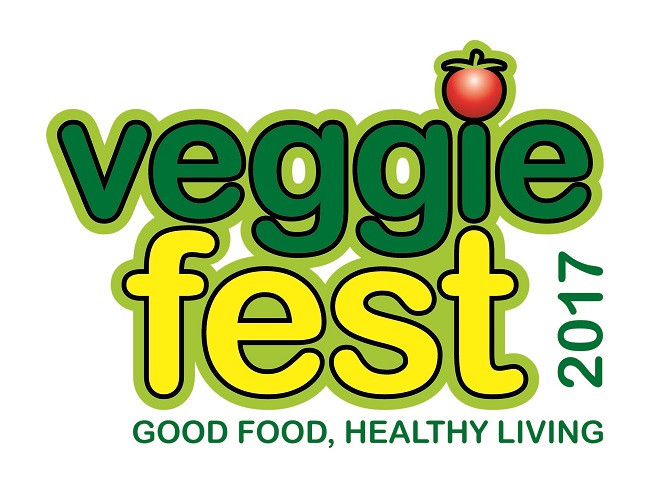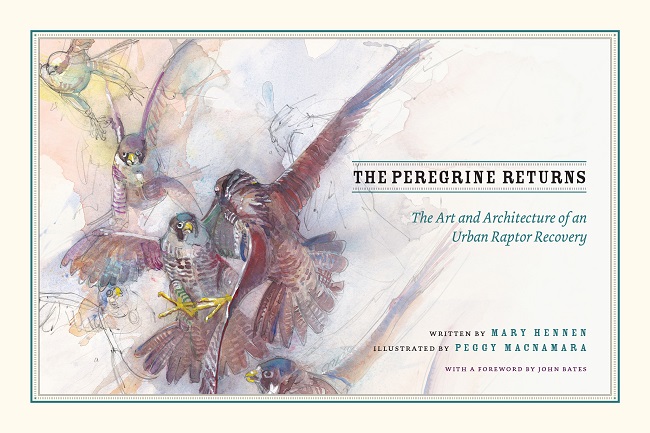August 6, 2017 – Breeding Success
![]() The Peregrine Returns…to Chicago and the Midwest
The Peregrine Returns…to Chicago and the Midwest
Everybody likes a success story. Unfortunately, with the arrival of what many call the Anthropocene era, success stories in the natural world are getting harder and harder to come by. That might have something to do with a recent study published by the Proceedings of the National Academy of Sciences, which actually used the words “biological annihilation” in describing the effect of human beings on the other animals on this planet. The Guardian, in a story with the not-so-cheerful headline, Earth’s sixth mass extinction event under way, scientists warn, has the details.
The scientists found that a third of the thousands of species losing populations are not currently considered endangered and that up to 50% of all individual animals have been lost in recent decades. Detailed data is available for land mammals, and almost half of these have lost 80% of their range in the last century. The scientists found billions of populations of mammals, birds, reptiles and amphibians have been lost all over the planet, leading them to say a sixth mass extinction has already progressed further than was thought.
The scientists conclude: “The resulting biological annihilation obviously will have serious ecological, economic and social consequences. Humanity will eventually pay a very high price for the decimation of the only assemblage of life that we know of in the universe.”
They say, while action to halt the decline remains possible, the prospects do not look good: “All signs point to ever more powerful assaults on biodiversity in the next two decades, painting a dismal picture of the future of life, including human life.”
The evidence is all around us. While it is a tragedy to lose charismatic fauna like passenger pigeons and polar bears and manatees, the disappearance of insects like the monarch butterfly and our native pollinators could very well be the lynch pin that pulls the world crashing down around our ears.
Like I said above, any success is a good one.
Which is why Peggy Malecki and I are happy to have Mary Hennen and Peggy Macnamara on The Mike Nowak Show this morning. Mary is assistant collections manager for the Bird Collection at the Field Museum, Chicago and director of the Chicago Peregrine Program. Peggy is adjunct associate professor at the School of the Art Institute of Chicago and artist-in-residence and associate of the zoology program at the Field Museum, among other things.
Together, they have created a book called The Peregrine Returns: The Art and Architecture of an Urban Raptor Recovery–written by Hennen, illustrated by Macnamara and published by The University of Chicago Press. There are also photos by Field Museum research assistant Stephanie Ware.
This is a book to be handled the way one would handle a peregrine egg–with care. It is obviously a labor of love, and the marriage of science prose with science-based art is a happy one. Macnamara writes,
 Rather than surprise, stun, or offend, I choose to paint about nature, its magic and wonder. Rather than concentrate on destruction, I choose to highlight what the scientist in conjunction with the citizen scientist can accomplish. The Peregrine story gives us hope and encouragement. I want to celebrate and participate in turning things around.
Rather than surprise, stun, or offend, I choose to paint about nature, its magic and wonder. Rather than concentrate on destruction, I choose to highlight what the scientist in conjunction with the citizen scientist can accomplish. The Peregrine story gives us hope and encouragement. I want to celebrate and participate in turning things around.
And, as Hennen reports, it really is a success story. Peregrine Falcons had disappeared from Illinois by the 1960s due primarily to DDE, a by-product of the organochlorine pesticide DDT. As is well documented, the same chemical almost wiped out bald eagles in America.
How were scientists able to bring back a species no longer found in the wild? It was not enough just to ban DDT (which occurred in 1972) or place Peregrine Falcons on the Endangered Species List (1973). While those measures would help protect the few remaining Peregrines, it did nothing to restore them to areas where there were none.
Scientists with the Peregrine Fund (then based at Cornell University) developed a program of captive breeding and release, called hacking. The first two releases of Peregrines in the Midwest (near the Mississippi River) in 1978 and 1979 involved birds bred at the Cornell lab. Beyond that, with the exception of perhaps one more from Cornell, all of the birds released in the Midwest came from falconers turned breeders.
She says that the Chicago Peregrine Program began in 1985, and that from 1986 to 1990, 46 captive-bred Peregrines from four different hack sites were released. She continues,
The success of this plan can be seen in the dispersal of Peregrines across the Midwest and their subsequent breeding. Not only have Peregrines released or born in Illinois moved to neighboring states but their birds have come here. Illinois’ breeding adult Peregrines have originated from hack sites and eyries located in Illinois, Indiana, Minnesota, Iowa, Missouri, Ohia, Nebraska, Wisconsin, and Canada.
Hennen explains how this cliff-dwelling species has adapted to urban areas like Chicago, using ledges as substitutes for their natural habitat. She describes the places these raptors have created nests, how the young are raised, how they mature and leave the nest (all in a relatively short time), nest fidelity, prey, interaction with other wildlife and more.
Chicago is a large city but the Peregrine Falcon population is relatively small, so almost literally, Hennen is on a first-name basis with a lot of these birds. Many have been banded, which allows scientists to document the activity and mortality of the birds. And they also make homes on some of Chicago’s iconic buildings, which is sometimes problematic and sometimes not.
All in all, it’s a lovely book that any birder–or any true Chicagoan–should have on the bookshelf.
Laura Calvert joins Advocates for Urban Agriculture
Peggy and I are big fans of Advocates for Urban Agriculture (AUA). As they put it themselves, “AUA is a coalition of individuals, organizations and businesses working to support and expand sustainable agriculture in the Chicago area, from home- and community-based growing to market gardens and small farms.”
This is the week of AUA’s
3rd annual Grown in Chicago: Summer Soirée & Showcase! This homegrown gala celebrating sustainable agriculture features a hyper-local urban farm-to-table dinner with produce from the fields of 18 urban farms right here in Chicago, including: Gardeneers, The Urban Canopy, Cedillo’s Fresh Produce, Chicago Patchwork Farms, McDowell Farm School, Windy City Harvest, The Cooperation Operation, OTIS Fresh Farm, South Side Occupational Academy, KAM Isaiah Israel Food Justice and Sustainability Program, Chicago FarmWorks, Planted Chicago, Growing Home, GlennArt Farm, Global Garden Refugee Training Farm, City Farm, A Just Harvest, and Big Delicious Planet!
The event is this Thursday, August 10 at the urban farm of the 4-Star Certified Green Restaurant & Caterer, Big Delicious Planet, 412 North Wolcott Ave, from 6pm-9pm. Get your tickets here.
At that event, AUA will introduce its new executive director, Laura Calvert, who just finished working with the Chicago Botanic Garden’s Windy City Harvest program, where her last position was as Food Safety and Compliance Supervisor.
As it so happens, we are catching her on the day before her very first day on the job! The same thing happened to us several weeks ago when we interviewed Lee Buttala, the new executive director for the Seed Savers Exchange. We just seem to have a knack for catching people at the right time.
The search for the perfect commercial tomato continues
Two years ago, when I was just podcasting my show from the Internet Wilderness, I stumbled across an article in Slate with this headline: This Is the Perfect Tomato: But supermarkets refuse to sell it. It told the story of Dr. Harry Klee from the University of Florida who had produced a tomato he named The Garden Gem because it is a prolific plant, it doesn’t bruise while being shipped, it resists many tomato diseases and, best of all, it has a lovely flavor, unlike most tomatoes you will find in the grocery store.
However, as Slate reported, all of that didn’t seem to matter:
Tomato lovers, stop rejoicing. Because you will not find the perfect supermarket tomato in any supermarket. Not now, and perhaps not ever. It’s not because the Garden Gem is a genetically modified organism—it was bred the same way tomatoes have been bred for thousands of years. It’s not because some multinational owns the patent and won’t release it in the U.S. (which, unfortunately, is the case with a superb British potato called the Mayan Gold). It’s because Big Tomato doesn’t care about flavor. Tomato farmers don’t care. Tomato packers don’t care. And supermarkets don’t care.
When it comes to flavor, the tomato industry is broken. And not even the Garden Gem appears able to fix it.
 If you read the story, it goes on to report about how growers and buyers are more interested in cost than flavor, which might seem rational to them but not to anybody who has ever eaten a really good tomato.
If you read the story, it goes on to report about how growers and buyers are more interested in cost than flavor, which might seem rational to them but not to anybody who has ever eaten a really good tomato.
Anyway, I immediately tracked him down and interviewed him for my podcast. It was a terrific conversation and you might want to take the time to give it a listen. After that interview, Dr. Klee sent me a couple of packets of seeds (which, apparently, you can still acquire by donating $10 to the Tomato Research Fund at the University of Florida). One packet contained Garden Gem seeds and the other featured seeds for something called New Hybrid.
Kathleen and I grew both plants last year and both were quite prolific and quite tasty. However, she and I both decided that we liked the New Hybrid just a bit more than the Garden Gem. So this year we grew just the New Hybrid, which, as you can see on this page, produces fabulous fruit and has a wonderful flavor.
I knew it was time to talk to him again, especially as he continues to search not just for the perfect flavor but, more important, determining exactly what causes people to think that a tomato has good flavor, which is much more subtle. As he writes on “Harry’s Tasty Tomato Page,”
The taste of a tomato is the consequence of the interactions of sugars, acids and a set of 15-20 volatile compounds. These volatiles are derived from a diverse set of precursors, including amino acids, fatty acids and carotenoids. We are trying to understand how all of these chemicals are integrated into the unique flavor of a tomato is not understood. Much of our research involves defining the most desirable combination of volatiles. We use the wealth of available tomato varieties available to us, including heirlooms and wild relatives of the cultivated tomato. The ultimate goal of our research is to identify the genes that control synthesis of the flavor volatiles and use this knowledge to produce a better-tasting tomato.
In fact, as the New York Times reported, earlier this year he and some colleagues did a paper for the journal Science called A chemical genetic roadmap to improved tomato flavor. Perhaps he’ll show us that roadmap on the show this morning.
Veggie Fest Chicago is back
We cover a lot of ground regarding food on this show, and this week, we’re revisiting with our friends at Veggie Fest Chicago, whose annual vegetarian food festival is coming up next weekend, August 12-13, on the grounds of Benedictine University, 5700 College Road, in Lisle, Illinois. The event runs from 11 a.m. until 8 p.m. both days, and the admission, parking, speakers, live music and activities are free.
 Now in its 12th year, Veggie Fest is one of the largest vegetarian food and lifestyle festivals in North America, says our guest Jonathan Kruger, one of the festival’s organizers. He adds that the festival drew record-breaking crowds of more than 40,000 people last and they plan for even more attendees this year.
Now in its 12th year, Veggie Fest is one of the largest vegetarian food and lifestyle festivals in North America, says our guest Jonathan Kruger, one of the festival’s organizers. He adds that the festival drew record-breaking crowds of more than 40,000 people last and they plan for even more attendees this year.
Jonathan said in a recent interview in the Naperville Sun: “The secret of Veggie Fest is really that Veggie Fest is not for vegetarians. It’s really for everybody else. If it were vegetarians, we would have a small group. But it’s for everybody who’s interested in some form or another to be able to incorporate some aspect of good food and healthy living into their diet.”
We’re not going to list the multitude of exhibitors, bands and speakers (we’ll let Jonathan tell us about them), but they include lots of free samples, food demos, professional healthy lifestyles speakers, yoga classes (new this year), local businesses that support a vegetarian and healthy lifestyle, a kid’s tent and the BIG DRAW — the international vegetarian food court (you do need to purchase tickets onsite for the food court), where you can sample foods you may never have tried, or never imagined could be vegetarian. Really healthy stuff likes juices and smoothies, plus lots of international cuisine, veggie “comfort food” and some really tasty desserts.
Another popular part of Veggie Fest each year is the Vegetarian Challenge (that’s free, too), which encourages people to go vegetarian or vegan for two weeks. If you sign the pledge, you’ll receive a goodie bag that includes coupons, tips and recipes.


